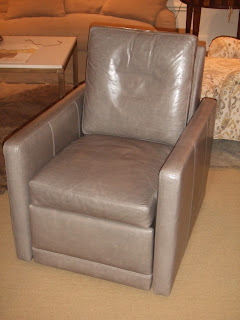Do You Know How To Get the Best Bang for your Buck?
Wood Furniture Construction Basics
If you are set on buying furniture in today's world, you need some education on the subject first. That's where we come in, to educate you! It's important to know the difference between low, medium, and high quality. Whether you are a college student, a newly wed couple, or a business executive, everybody needs to know the basics. From there, you can make an educated decision to match your life stage and situation. Here are some key construction points to take with you...
What to look for in High Quality Construction:

- Mortise and tenon
- Doweling
- Mitering
- Dovetails
- Tongue in groove
- Frames glued and screwed
- Floating construction where drawer bottoms are not glued, but instead move freely as humidity changes.
- Wood is air dried then placed in a kiln to remove as much moisture as possible. This can take months depending on the type of wood.
- Wood matching for color and grain.
- Wood is selected for it's merits. Frames are constructed from strong stable woods like poplar with cabinet woods like solid cherry, oak, or maple used on exterior surfaces.
- The piece should look and feel solid. Try to rock or jostle the piece. It shouldn't squeak or twist.
- Backs and unexposed parts should be sanded smooth and well fitted. Only the best quality furniture does this well.
- Dust panels between drawers.
- Quality built-in light fixtures and lined silverware drawers in hutches, buffets, dining room, or display cabinetry.
- Smoothly gliding drawers that close square and flush.
- Doors that close neatly and that are square and flush with the cabinet front.
- Highest quality hardware
What to Look for in Medium Quality Construction:
- Frames glued, stapled
- Floating construction
- Moderate or low-cost woods such as ash, poplar, or pine
- Pieced and glued woods like butcher block
- Laminates
- MDF (medium density fiberboard) or particle board for unexposed portions of the piece. May be veneered with real woods.
- The piece should look and feel reasonably solid. It shouldn't squeak or twist.
- Backs and unexposed parts will probably fit okay but not be sanded smooth or tightly fitted. Probably stapled to piece.
- Open construction between drawers.
- Smoothly gliding drawers, however, you may notice minor mis-alignments or gaps between drawers or doors and cabinet face.
- Doors are square and flush with the cabinet front. Occasional, minor mis-alignments might be noted.
- Stamped or cast hardware of medium quality.
What to Look for in Low Quality Construction:
- Engineered kit furniture constructed for easy home assembly.
- Laminates
- Particle board or MDF
- Low-quality woods
- Build in place and don't blow on it.
- Backs and unexposed parts are usually composed of fiberboard.
- Drawers and square doors may show obviously uneven gaps or mis-alignment.
- Doesn't hold up well over time.
- Can't be taken apart and reassembled—particle board usually breaks down.
- Shelving may bow if it is over-weighted with books.
- Excess humidity or exposure to water can ruin piece.
Now that you know the basic construction components to look for, go ahead and get started and have fun furniture shopping! Most importantly, furnish your home with the items that speak to you and that you love!
Photo & Info Credit In Order:
1) thehome.com 2) studio201furniture.com 3) squidoo.com 4) demesne.info










.jpg)



















